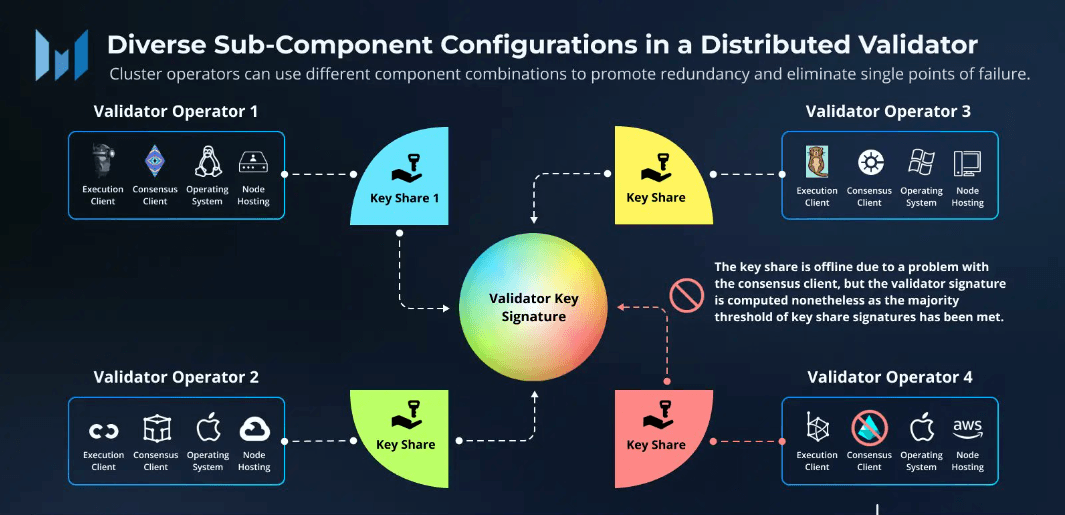The transition from Proof-of-Work to Proof-of-Stake in Ethereum through the Ethereum Merge introduced validators responsible for transaction verification and network security. However, challenges such as centralization and accessibility arose in the staking process. Distributed Validator Technology (DVT) emerged to address these issues and aims to enhance Ethereum staking by increasing decentralization, security, and participation.
Concerns surrounding centralization in Ethereum's PoS model have been raised, particularly due to the high cost barrier for becoming a validator. This requirement of staking at least 32 ETH deters many individuals from participating, leading them to opt for staking services that introduce central authorities, contradicting the decentralization goal of PoS.
Solo validators also face technical obstacles, as setting up and maintaining a validator node requires expertise and reliable equipment. Loss of validator keys poses a security risk, potentially resulting in loss of staked ETH or network manipulation if private keys are compromised.
Introduction to Distributed Validator Technology
 DVT offers a solution by dividing validator responsibilities across multiple machines, reducing single points of failure and promoting decentralization in staking.
DVT offers a solution by dividing validator responsibilities across multiple machines, reducing single points of failure and promoting decentralization in staking.
Functionality of DVT
 Distributed Validator Technology (DVT) improves Ethereum's PoS model by distributing validator tasks across nodes through Distributed Key Generation (DKG) and Shamir's Secret Sharing. This approach enhances fault tolerance and security while maintaining network integrity.
Distributed Validator Technology (DVT) improves Ethereum's PoS model by distributing validator tasks across nodes through Distributed Key Generation (DKG) and Shamir's Secret Sharing. This approach enhances fault tolerance and security while maintaining network integrity.
Advantages of DVT for Ethereum Staking
- Decentralization Enhancement: DVT facilitates broader staking participation, reducing centralization.
- Fault Tolerance Improvement: DVT minimizes downtime and penalties through distributed tasks.
- Security Enhancement: Elimination of single points of failure enhances key security.
- Operational Continuity: DVT enables continuous operation despite node issues.
- Accessibility Improvement: DVT lowers the entry barrier for staking.
Limitations of DVT
- Complexity Increase: Managing multiple nodes introduces complexity and potential failure points.
- Latency Concerns: Additional network hops may cause slight latency increments.
- Operational Expenses: Running multiple nodes increases operational costs compared to solo validators.
Future Prospects
- User-Friendly Tools: Development of intuitive interfaces for managing validator clusters.
- Security Enhancements: Continuous audits and enhancements to ensure robustness.
- Seamless Integration: Integration of DVT with existing staking infrastructure for smooth operation.
- Research and Growth: Ongoing research aims to enhance DVT's performance and scalability.
Collaboration within the Ethereum community will be vital in realizing the full potential of Distributed Validator Technology.







Comments